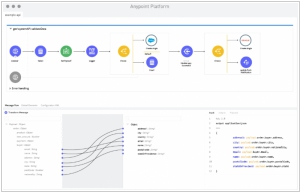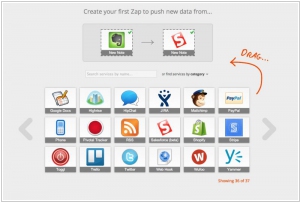MuleSoft vs Zapier
May 27, 2023 | Author: Michael Stromann
MuleSoft and Zapier are two popular integration platforms that enable users to connect and automate various applications and systems.
MuleSoft, developed by Salesforce, is an enterprise-grade integration platform that offers robust capabilities for building complex integrations and managing data flows across different systems. It provides a comprehensive set of tools and features, such as API management, data mapping, and integration workflows. MuleSoft is often used by large organizations that require extensive integration capabilities, scalability, and support for mission-critical systems.
Zapier, on the other hand, is a user-friendly integration platform designed for automating workflows and connecting various applications without the need for coding. It offers a vast library of pre-built integrations, known as "Zaps," that allow users to connect apps and automate tasks with a simple "trigger-action" approach. Zapier is popular among small to medium-sized businesses and individual users who seek quick and easy integrations between common apps.
See also: Top 10 Cloud Integration software
MuleSoft, developed by Salesforce, is an enterprise-grade integration platform that offers robust capabilities for building complex integrations and managing data flows across different systems. It provides a comprehensive set of tools and features, such as API management, data mapping, and integration workflows. MuleSoft is often used by large organizations that require extensive integration capabilities, scalability, and support for mission-critical systems.
Zapier, on the other hand, is a user-friendly integration platform designed for automating workflows and connecting various applications without the need for coding. It offers a vast library of pre-built integrations, known as "Zaps," that allow users to connect apps and automate tasks with a simple "trigger-action" approach. Zapier is popular among small to medium-sized businesses and individual users who seek quick and easy integrations between common apps.
See also: Top 10 Cloud Integration software
MuleSoft vs Zapier in our news:
2023. Zapier launches Canvas, an AI-powered flowchart tool
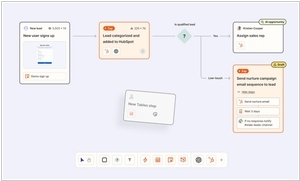
Zapier has unveiled Canvas, a innovative tool designed to assist users in planning and visualizing their crucial business processes. The tool combines intuitive visual diagramming features with AI capabilities to aid users in transforming their processes into Zapier-based automations. Canvas serves as a comprehensive platform where users can map out their processes from start to finish, and even modify the elements connected to Zapier directly within the interface. Notably, Zapier envisions expanding Canvas's functionality to allow users to edit any components, whether or not they are linked to Zapier, directly within the tool. In essence, Canvas functions as both a basic flowchart diagramming tool for process documentation and as an interface for editing the connected components. Additionally, Zapier has made Tables, its automation-focused database service, available to all users, further enhancing its automation capabilities.
2021. Salesforce announces new Mulesoft RPA tool based on Servicetrace acquisition
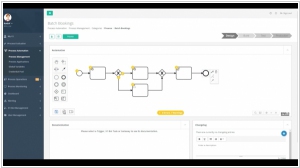
When Salesforce recently revealed its acquisition of German RPA vendor Servicetrace, many speculated that it could complement MuleSoft, a company purchased by the CRM giant in 2018 for $6.5 billion. MuleSoft, among its various capabilities, assists customers in constructing APIs for legacy systems, while Servicetrace offers automation solutions for such systems. As anticipated, the company has now announced the development of a new tool called MuleSoft RPA, combining the functionalities of MuleSoft and Servicetrace. The acquisition of Servicetrace was finalized on September 2nd, and Salesforce is swiftly integrating it into relevant areas across the organization, with MuleSoft integration being a key focus.
2021. Zapier buys no-code-focused Makerpad
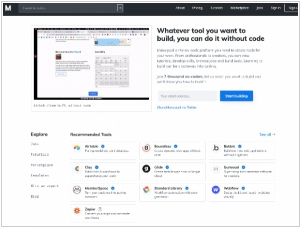
Zapier, a renowned no-code automation tool, has acquired Makerpad, an educational service and community focused on no-code development. The no-code sector, along with its related field of low-code development, has been vibrant in recent times. The low-code market has witnessed significant funding rounds, with some companies adopting low-code tools to expedite internal software development. In the no-code realm, Zapier stands as a notable success with its impressive revenue figures reaching nine digits.
2017. Zapier added shared folders for teams
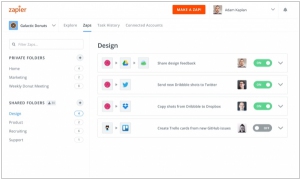
The cloud app integration service Zapier has introduced shared folders, enabling teams to collaborate and automate tasks collectively. These shared folders facilitate access to a shared collection of Zaps, allowing teammates to collaborate and construct more robust workflows. With an individual Zapier account, users can create automated workflows called Zaps that connect multiple apps. However, until now, it was not possible to share these innovative workflows with colleagues. Shared folders eliminate this limitation by enabling collaboration. Anyone with access to a shared folder can modify and enhance the Zaps within it, or even duplicate them for their own utilization. Furthermore, we have incorporated an option to share accounts for other tools, such as Dropbox, Pipedrive, and Typeform. This eliminates the need to create separate logins for each team member.
2017. Zapier launched team accounts
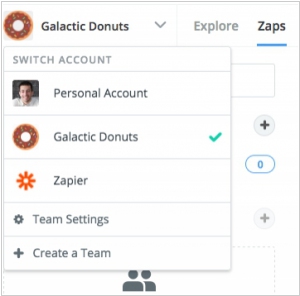
Zapier, a platform that specializes in connecting applications and automating workflows, has introduced a new offering called Zapier for Teams. This plan, priced at $250 per month, complements Zapier's existing free and $20/month tiers and incorporates several collaborative features into the service. With Zapier for Teams, businesses can now grant their employees access to Zapier while managing a single consolidated bill. The implementation of this plan also enhances security measures by allowing companies to easily add and remove user accounts as needed. Previously, under Zapier's previous pricing tiers, employees would often resort to sharing passwords, which was far from an ideal solution. With Zapier for Teams, companies can foster improved security practices and enjoy the benefits of streamlined collaboration within their organization.

